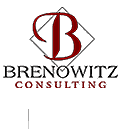


|
Issue
# 5 - Trust in Teams
In this issue you will find: 1. An introduction to the topic of Trust in Teams 2. A review of "Trust & Betrayal in the Workplace" by Reina and Reina 3. Pointers to additional information on this topic ______________________________________________________ 1. TRUST IN TEAMS--AND WHY IT MATTERS Trust is the willingness to believe that others will behave in reliable, predictable, non-hurtful ways. It is one of the most important conditions for healthy and productive relationships. It contributes to the sense of safety that allows us to let ourselves be known to others and to try new things. Without trust, we are more guarded in our interactions with others, less willing to share information or other resources, and reluctant to work collaboratively with others. Now more than ever, organizations require collaboration in order to succeed. The complexities of technology, increased competition, and interdependence, have created a work environment that requires the knowledge and expertise of many, interacting synergistically. It's too much for any one individual to do alone. And so, increasingly, we have come to rely on teams as the best arrangement for solving difficult problems under demanding conditions. Presumably, a team is comprised of a manageable number of people, each of whom has a contribution to make. But that's not all that's required for a team to be successful. Research identifies three essential components of team success: (1) a goal that is clear, significant, and embraced by all members; (2) members who are competent in the technical aspects of the project; and (3) the ability of the members to work together effectively and collaboratively. This third factor is so fundamental to high functioning teams that it can make or break their ability to succeed. In our experience, teams often have the most difficulty with this element. It is frequently overlooked with the hope that if a group of talented people work really hard, they will be able to "pull it out." At the heart of collaborative work relationships is trust. Paradoxically, the same conditions that characterize today's work environment--faster, cheaper, geographic dispersion, competition for scarce resources, downsizing, mergers and acquisitions--also create conditions that contribute to mistrust and the feelings of betrayal that come with it. So if trust is critical for success but hard to create and sustain, the important question is, "How can trust be developed and maintained in teams?" * Where It All Starts: It is important to understand that different people come to work with different assumptions about trust and how it is built. These beliefs are typically formed and reinforced in early life experiences, including cultural differences. This takes two forms that can be summarized as the "half empty/half full" model. Some approach relationships based on the belief that others are fundamentally trustworthy. They start from a position of trust, holding and building on this assumption until the other person does something that is perceived as untrustworthy. These are the "the glass is half full" people. Those who see the glass as "half empty" start from the position that it is better not to trust others until the others have demonstrated that they are worthy of that trust. They have a wait-and-see approach. The potential for collision between these two points of view is high and can, ironically, contribute to a difficult beginning for everyone, increasing the likelihood of misunderstanding. As part of the team formation and start-up process, it's a good idea to find out where each of the members is starting from and to discuss what will help them develop a foundation of trust. * The Dynamics of Trust and Risk: The lifeblood of thriving organizations is the ability to innovate. Whether innovations are tangible, patentable inventions, intellectual property, or new processes that improve how work is done and customers are served, companies can't compete successfully without them Creating and innovating new products and process entails taking risks and the possibility of failure. Our survival instinct, however, leads us to avoid or minimize risk when we are feeling unsafe. Employees who experience their work environment as risky put a lot of energy into *avoiding or managing* those risks rather than *taking* risks. Situations or cultures of low trust contribute to this experience or perception of riskiness. High trust is the condition that supports and enables high risk-taking. * The Importance of Team Start-up and Formal Agreements: Perhaps the greatest investment that can be made to foster a climate of trust among team members is to engage in a formal team start-up process. During this process, team members come together to discuss the team's charter, align and buy in to the goals and deliverables, clarify roles and responsibilities, and work out important details and expectations with stakeholders. The creation of a clear set of team agreements is equally important. These agreements are the basis for setting realistic expectations and the rules of engagement for how members will work together. They must also include a process for how issues will get surfaced, conflicts will get resolved, and problems will get escalated when the team cannot come to agreement. Since unmet expectations--whether articulated or assumed--and the inability to resolve conflict are the chief causes of feelings of disappointment and betrayal, these agreements are extremely important. * Disappointment and Betrayal: Disappointment and betrayal are the feelings that result from a perceived breach of trust. This happens, for example, when a commitment is not delivered or an agreement is not kept, or so it seems. When this occurs, the level of trust of the person feeling betrayed drops. The amount that it drops depends on several factors, including that person's position on the "half-full/half-empty" continuum and the significance of the unmet expectation to him/her. If care is taken to discuss and work out the issues in a timely way, trust can be recovered--though it will not return to the original level immediately. If little or nothing is done to deal with the breach, then the trust and the relationship may be permanently damaged. When successive breaches occur, these cycles repeat themselves until they become patterns or norms in the team, the relationships are characterized by mistrust and suspicion, and the style of work becomes increasingly dysfunctional. Distrustful relationships between or among even a few members of a team are enough to affect the entire group. Once this occurs, it is virtually impossible for the team to recover without assistance from someone outside the team who has expertise in rebuilding damaged relationships. So the best approach is to get off to a good start with clear agreements and to make sure that the team has the necessary support early in its life to help members work within their newly created arrangements until they become the accepted norm. * An Additional Caution: With many more options available for how to communicate with each other as well as increased geographic dispersion of people who need to collaborate, we have become increasingly reliant on technical communications media at the expense of face-to-face (f-t-f) interaction. But when it comes to developing trust, there is no substitute for f-t-f engagement. How much is enough? It depends on the team, its work, and other environmental and organizational circumstances. Both research and our experience show that the initial start up work needs to be done f-t-f. People frequently avoid conflict therefore and conflict resolution by phone or on-line for fear of being misunderstood and making things worse. So periodic meetings for check-in and team maintenance are an absolute necessity, as are agreements that call for the surfacing of any issues that could affect the relationships among the team members as soon as they see them. It is our observation that teams more often fail because of relationship issues than for lack of technical ability. This component is often neglected because it requires hard, uncomfortable work and an investment of time and energy by *everyone* involved. The price that is paid every day--in costs to people, organizations, and customers--is staggering. ______________________________________________________ 2. "Trust & Betrayal in the Workplace: Building Effective Relationships in Your Organization" - by Dennis Reina & Michelle Reina (Berrett-Koehler, 1999) In today's fast-paced, changing workplace, trust is more important than ever. But according to Dennis and Michelle Reina, after two decades of downsizing, restructuring, and managerial changes, trust within organizations is at an all-time low. How can we reverse this damage? "Trust and Betrayal in the Workplace" gives us a proven model to help us rebuild trust in our organizations. The Reina Trust & Betrayal Model helps us to conceptualize trust and betrayal in new ways. The book is divided into three parts. Part I (Understanding Trust & Betrayal) defines what trust and betrayal are and why they are important in today's organizations. Many authors and consultants talk about trust, but use euphemisms to discuss betrayal. The Reinas deal with betrayal head on. Their model shows us how to begin the process of healing from betrayal and rebuilding trust both between individuals and in teams. Part II (Transactional Trust) is the meat of the book. Reina & Reina remind us that trust is created incrementally and is reciprocal--one has to give it to get it. They introduce us to three types of transactional trust: contractual trust, communication trust, and competence trust. Each has specific behaviors that build trust and maintain relationships in the workplace. Contractual Trust, which forms the basis of most interactions in the workplace, is defined as managing expectations, establishing boundaries, delegating appropriately, keeping agreements, and being congruent in our behavior. Communication Trust is the willingness to share information, tell the truth, admit mistakes, maintain confidentiality, give and receive constructive feedback, and speak with good purpose. When we readily and consistently share information and involve employees in the running of the business, it not only affects trust, but also productivity and profitability. Competence Trust involves respecting people's knowledge, skills, and judgment, involving others and seeking their input, and helping people learn skills. Competence Trust is found where leaders and employees learn from one another, and where both are learning from their customers, suppliers, and competitors. Part III (Transformative Trust) shows us how the model can serve as a tool to help us move our organizations toward the highest form of trust -- Transformative Trust. Transformative Trust occurs when the amount of trust within a team or organization reaches a critical point and increases exponentially, becoming self-generating and synergistic. Four core characteristics are usually present -- conviction, courage, compassion, and community. At the end of each chapter a section headed "Ideas in Action" provides reflective questions and application exercises for using the material in day-to-day work environments. We at millpond believe that in high-trust environments, people are more willing to keep agreements, share information, admit mistakes, learn from those mistakes, and take on greater responsibility. They are more committed to and aligned with the organization's vision. By creating workplaces where trust flourishes, we can dramatically improve morale, productivity, and profits. This book teaches us how to do that. ____________________________________________________ 3. Web sites and Other Resources we've found about this topic include: * The web site for Dennis and Michelle Reina's firm, Chagnon & Reina Associates, is <www.trustinworkplace.com> They offer several resources for trust building, including a certification program for HR and OD professionals. * See Chapter 6, Collaborative Climate, in Larson, C.E. and LaFasto, F.M.J. (1989). Teamwork: What must go right/What can go wrong. Newbury Park, CA: Sage Publications for a discussion of this topic. * Handy, C. (1995, May-June). Trust and the virtual organization. Harvard Business Review, Reprint no. 95304. * NTL Institute offers a variety of development programs that address trust building between individuals and in organizations: <www.ntl.org>
|
||||||||
|
||||||||